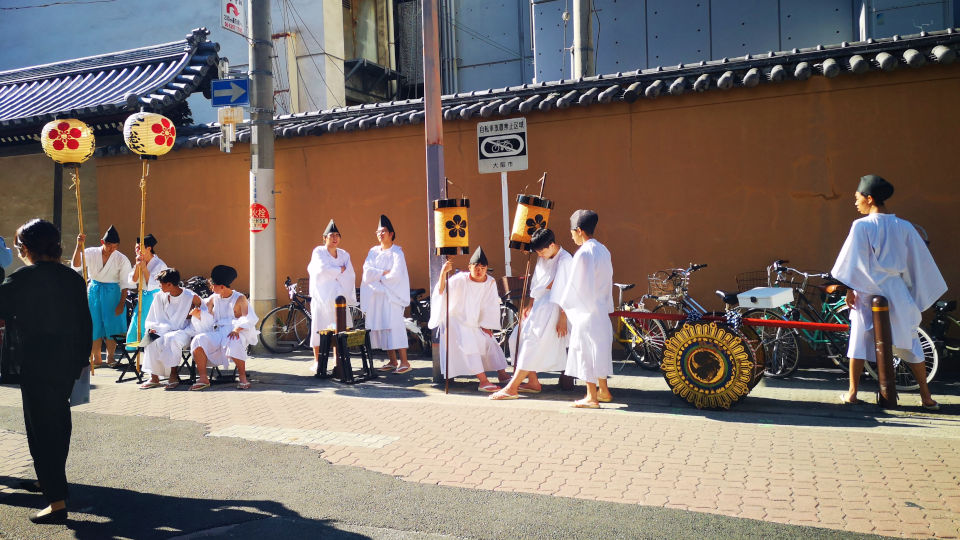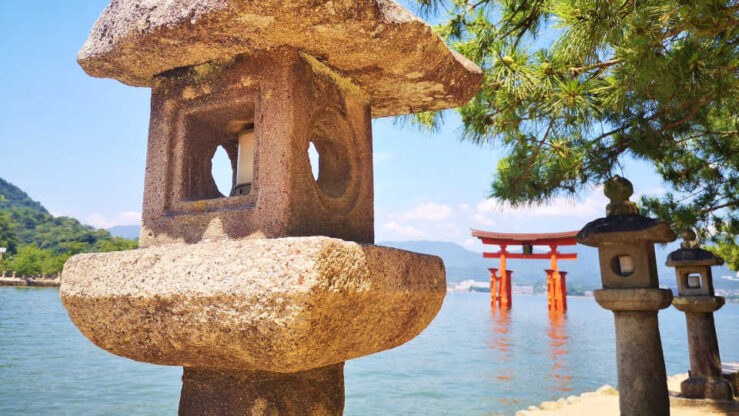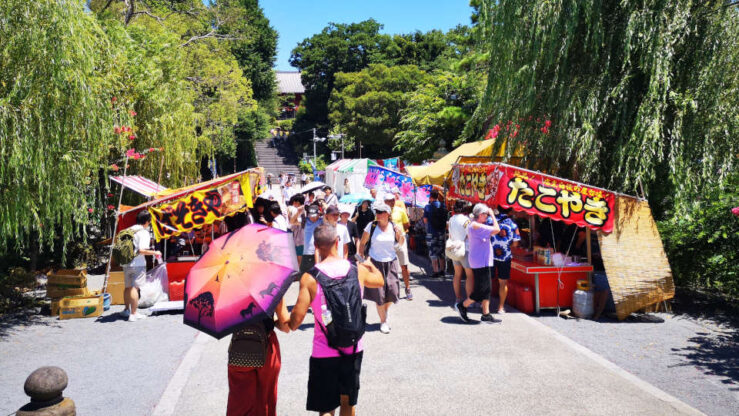Where to Stay in Osaka? (Perhaps for one of the traditional Japanese Festivals)
Maybe you have come to Osaka to immerse yourself in one of the famous Japanese festivals. Japan is known for its traditional matsuri festivals, taking place everywhere in the country, especially during summer. So, where to stay in Osaka to be conveniently located for one of the top summer festivals in Japan and other cultural attractions in the city?
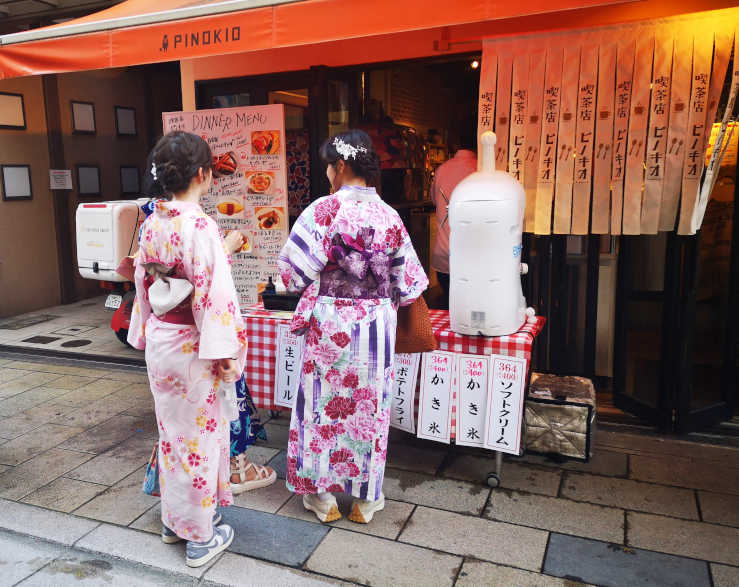
The Japanese festivals are unique | Photo: Travel In Culture
Just as Tokyo celebrates the Sanja Festival, held at Sensoji Temple, and Kyoto is the focal point for the Gion Matsuri, Osaka proudly hosts the Tenjin Matsuri.
The traditional matsuri festivals, held in many Japanese cities at historic temples and sites, are deeply rooted in the cultural heritage. Usually, the annual festivals go on for several days. People participate dressed in festive attire and parade through the streets with floats and shrines. The vibrant festival processions have existed for centuries and offer a glimpse of the Japanese cultural heritage.
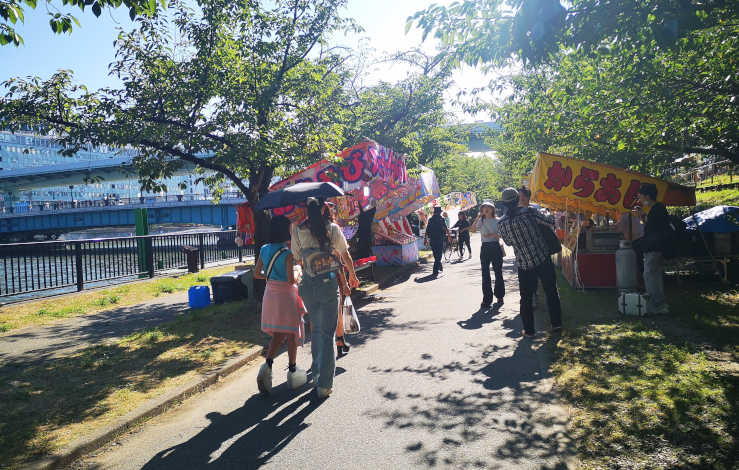
The Tenjin Matsuri festival in Osaka | Photo: Travel In Culture
Below, you will find a description of four of the most attractive areas in Osaka to stay for Japanese cultural highlights, including participation in the Osaka Summer Festival. The four areas are Kita, Minami, Tennoji, and Osaka Bay Area.
Kita Ward in Osaka is a fantastic blend of old and new, and it is the focal point of one of the city’s biggest festivals. You should definitely consider Kita when considering where to stay in Osaka. The modern top attractions include the Umeda Sky Building, a characteristic landmark in the cityscape, and the Ferris wheel atop the Hep Five building, a commercial complex.
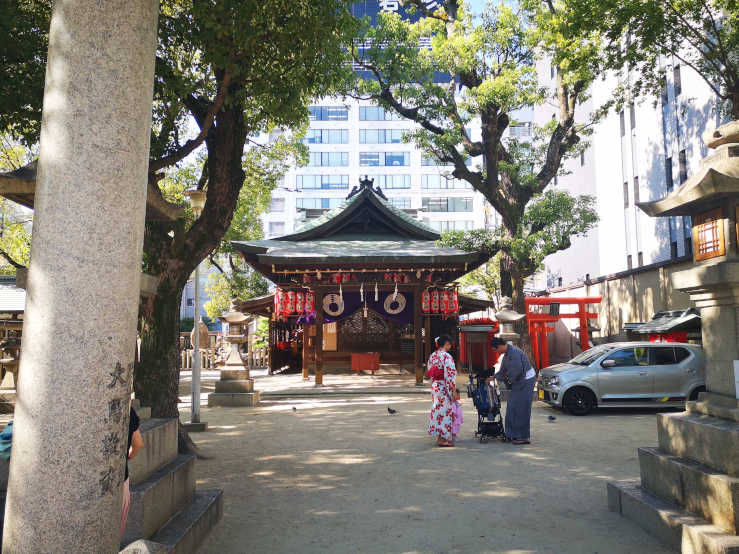
Photo: Travel In Culture
Nevertheless, Kita is also full of more traditional alleys with shops, bars, restaurants, and a vibe of the olden days. Also, there are amazing temples and shrines, both telling the history of Osaka and still being used as part of the Tenjin Matsuri and other festivals and long-established Japanese rituals. Don’t miss the festival if you are in Osaka towards the end of July – it is one of the most exciting events in the city!
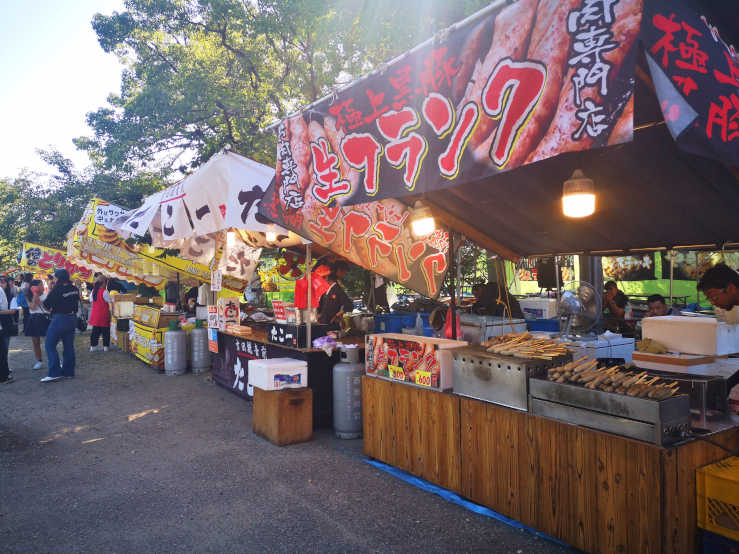
Market stalls at one of the Japanese festivals in Osaka | Photo: Travel In Culture
If you intend to travel to other cities in Japan, you may find it perfect to stay in Kita around Umeda and Osaka Station, where you will be close to Osaka’s loop line and all the train connections out of Osaka. You will have easy access to Shinkansen trains at Shin-Osaka Station that link Osaka to the rest of Japan.
There is so much to explore in Kita. You can visit the spectacular space-ship-like Umeda Sky Building in the Umeda district close to Osaka Station, with two 40-storey towers, a rooftop observatory atop the building with panoramic views, and a traditional underground market. The cutting-edge structure was designed by Hiroshi Hara and completed in 1993.
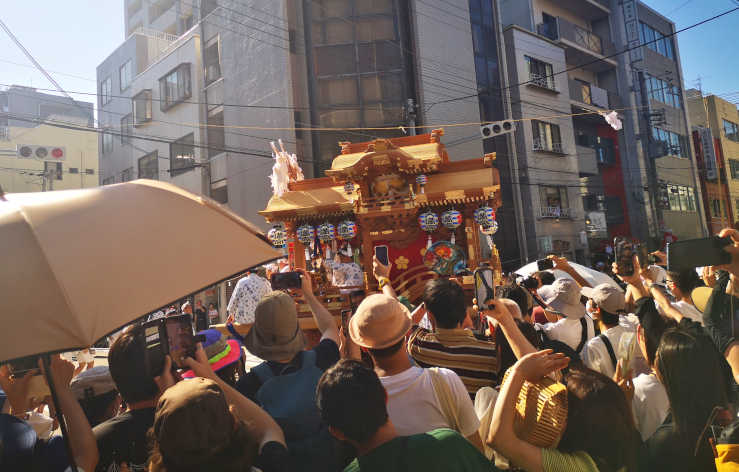
Procession at one of the traditional Japanese festivals in Osaka | Photo: Travel In Culture
Walking around the business district with its futuristic skyscrapers, modern architecture, fashionable hotels, and overwhelming shopping malls is a unique experience. Moreover, Kita also seethes with a traditional atmosphere, especially around the temples and shrines. In particular, the past is brought to life with the annual festivals in the summer. Osaka Tenmangu Shrine, founded in the 10th century, is a contemplative space in the city. Over time, ravaging fires have burnt it down several times, and the current buildings are much more recent (the current main hall dates to 1845). As one of the famous shrines in Osaka, it is a focal point of the Tenjin Matsuri festival, taking place here during July (24th and 25th).
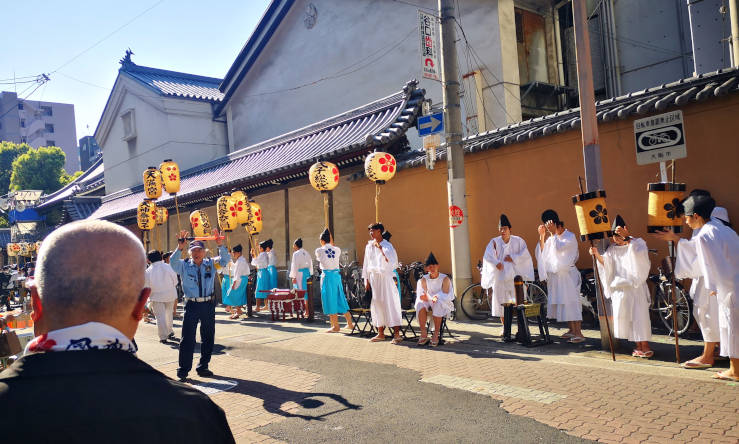
Festival preparations | Photo: Travel In Culture
Tenjin Matsuri, one of three significant annual celebrations in Japan, is comparable to Kyoto’s Gion Matsuri and Tokyo’s Kanda Matsuri. The festival celebrations and rituals are performed at the shrine and around the city. The processions occur both through the neighbouring streets and on water, culminating on the night of July 25th! People parade in colourful attire, some dressed as well-known characters and lions/dragons. Portable shrines are carried through the streets and brought onto waiting boats on the river, from where the procession continues, all accompanied by festive fireworks.
Minami covers the areas around Namba Station, Dotonbori, Shinsaibashi, and Amerikamura. Full of neon billboards along the Dotonbori River, anime-related otaku shops, pachinko parlours, and nightclubs, Minami is a paradise if you want to immerse yourself in the vibrant metropolis and its attractive entertainment culture. It is an excellent place for people-watching.
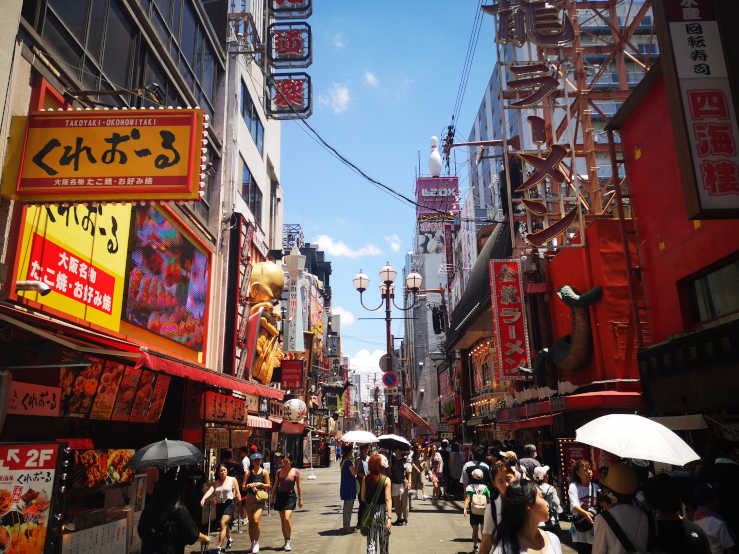
Dotonbori | Photo: Travel In Culture
As a counterpoint to this, Amerikamura is a fascinating district with retro-style and vintage clothing, pop and punk culture, hip-hop phenomena, and more. Other attractions include the atmospheric, covered Kuromon Market, dating back to the Edo Period, with some of Osaka’s best local food options and great dining places. In Minami, you will really feel the atmosphere of an action-packed city. So, when considering where to stay in Osaka, Minami may be the place to choose if you really want to feel the heartbeat of Osaka!
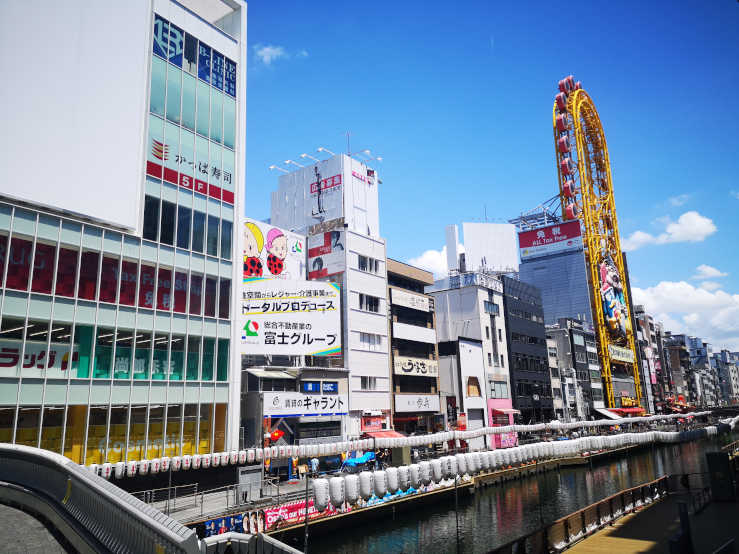
Dotonbori River | Photo: Travel In Culture
The main draw in Minami at the end of the Shinsaibashi shopping area is Dotonbori, the famous strip of entertainment venues, restaurants serving the local dishes, and trendy bars with impressive neon signs along the river. A river cruise is one of the options to experience it all!
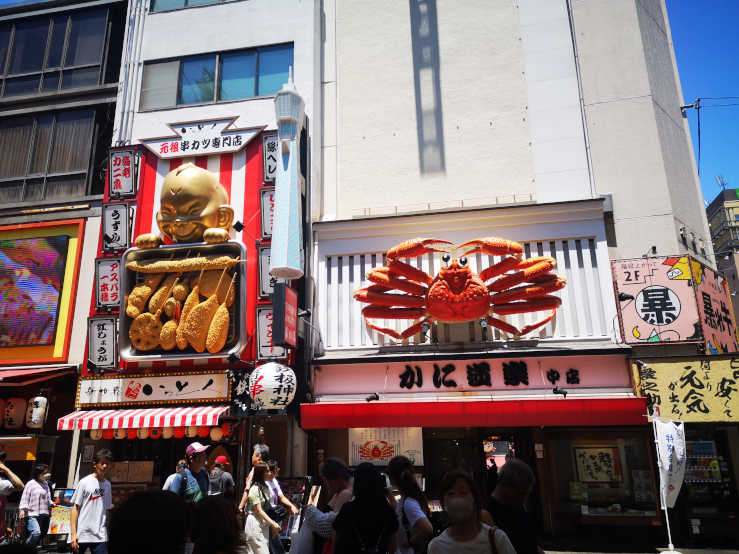
Photo: Travel In Culture
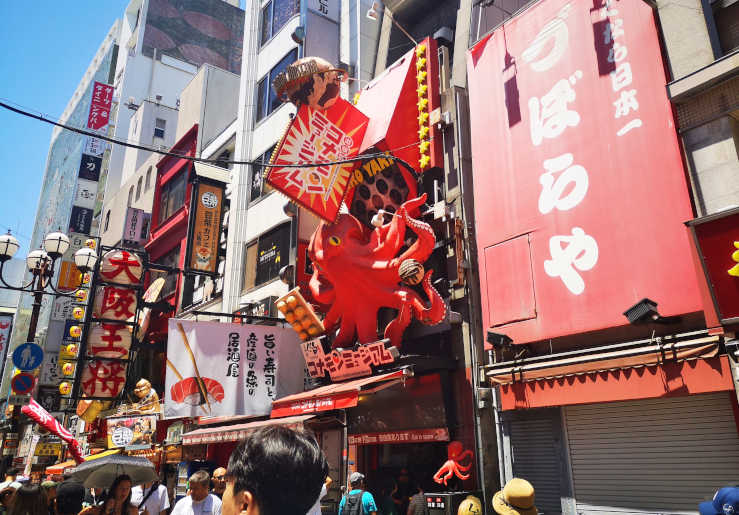
Photo: Travel In Culture
One of the famous billboards by Ebisubashi Bridge is the large image of the Glico Man on the Glico (a candy manufacturer) billboard. That is a favourite selfie spot. Another icon is the 3-dimensional moving crab (Kani Doraku) in the pedestrian street, also near Ebisubashi Bridge, which promotes the Kani Doraku restaurant. A third one is the massive 3-dimensional octopus hanging above a takoyaki (octopus dumpling) restaurant.
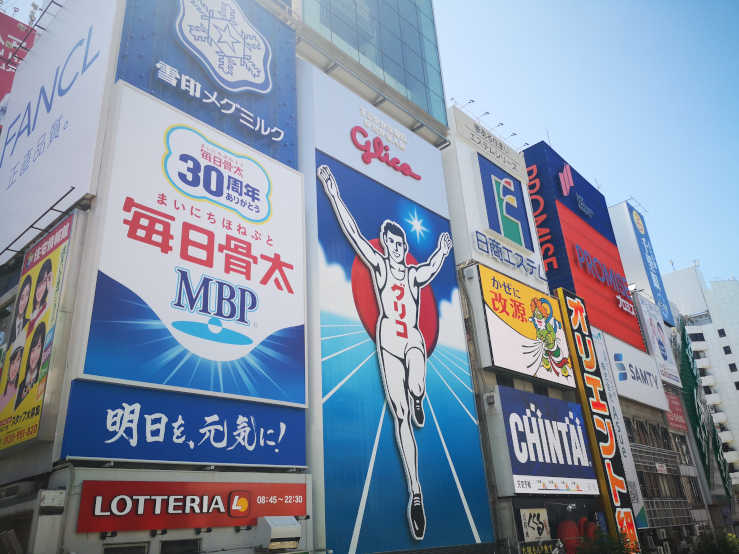
The Glico Man | Photo: Travel In Culture
Round 1 Stadium is a fantastic and overwhelming amusement centre with 10+ floors of popular entertainment and activities. Everything from karaoke and pachinko games to bowling, bull riding, archery, claw machines, and other arcade games attracts locals and visitors alike.
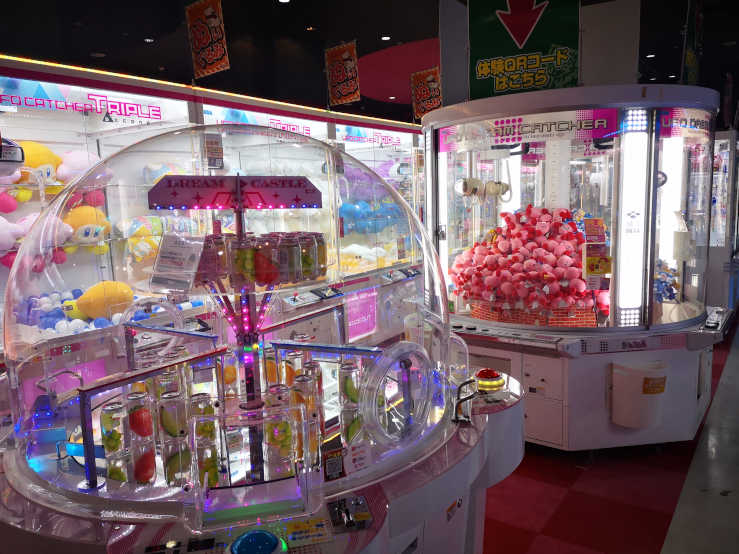
Round 1 Stadium | Photo: Travel In Culture
Another great neighbourhood is Amerikamura. It is the hip place to explore an alternative Osaka with its America-inspired subculture of quaint art, vintage shopping, and cool nightclubs. Retro objects and music dominate in the narrow streets, where you will also catch a glimpse of Osaka’s youth culture. The lampposts are eye-catching, the ambience authentic, and the flavours and scents delicious. Takoyaki is one of the must-try local specialities.
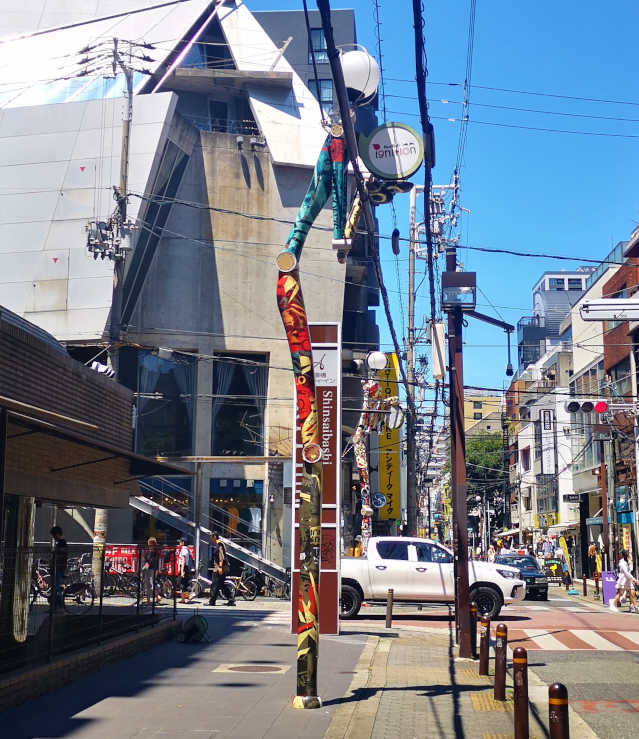
Lamppost in Amerikamura | Photo: Travel In Culture
Minami also has a traditional angle, with a few shrines to visit. One is the unusual, retro-style Namba Yasaka Shrine, which takes the shape of a roaring lion’s head with a stage inside. According to the legend, the shrine’s deity killed a snake in the Namba neighbourhood. Built in 1975, it is one of the newer shrines in the city. Namba Yasaka Shrine is also the site of one of the spectacular annual festivals held in Osaka, taking place in January.
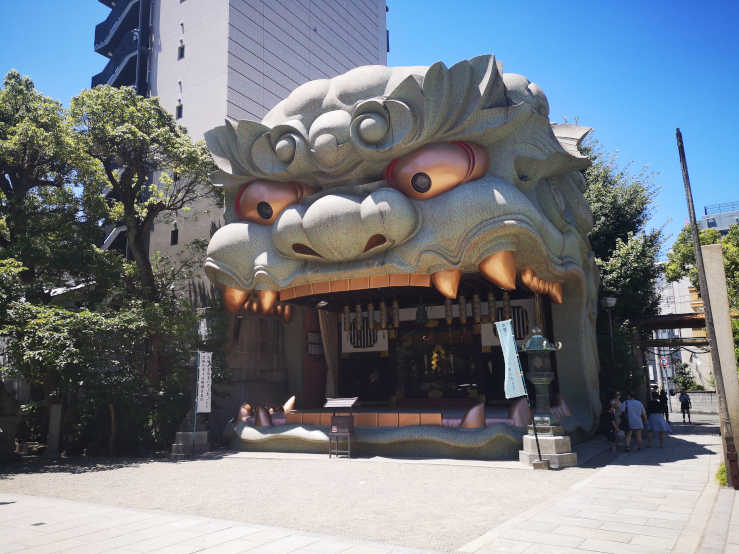
Namba Yasaka Shrine is a lion head | Photo: Travel In Culture
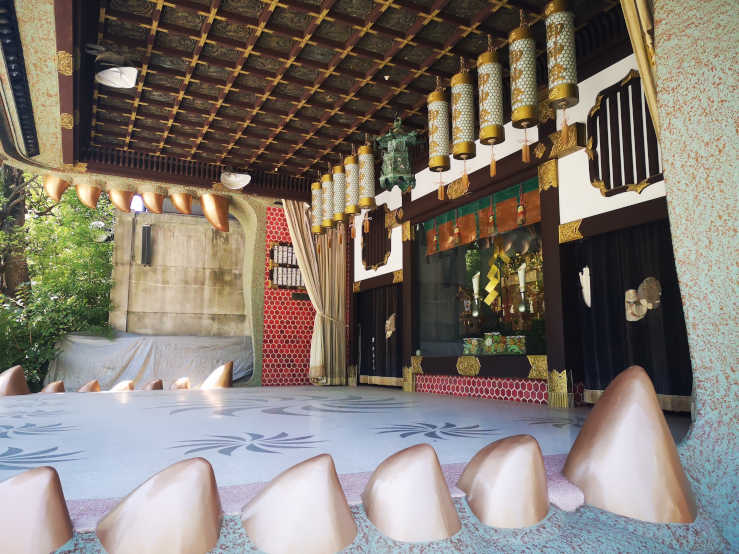
The inside of the lion’s mouth – Namba Yasaka Shrine | Photo: Travel In Culture
To stay right in the middle of cutting-edge modern architecture, an unusual city centre, and old Buddhist temples in Osaka, consider Tennoji, where everything meets. The district is a revival of an old urban area, including today the vibrant Shinsekai neighbourhood with its many cheap restaurants, the Janjan-Yokocho Shopping Street, and a variety of entertainment.
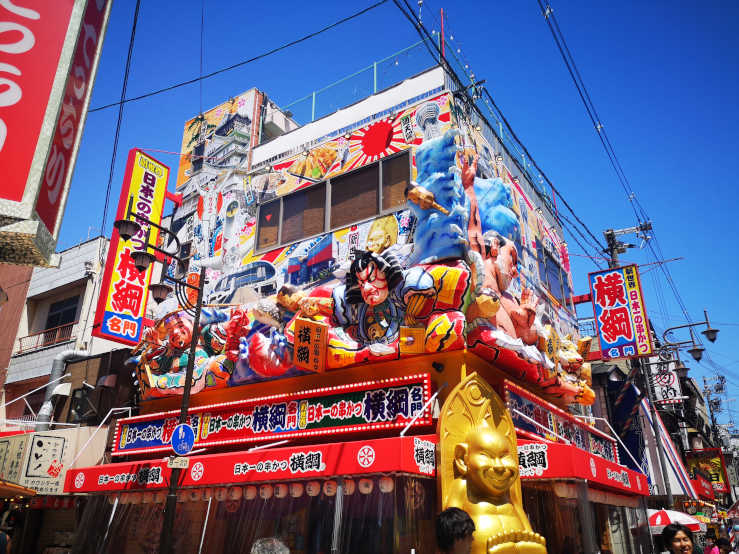
Photo: Travel In Culture
Tennoji is, in particular, known for its skyline with two dominating ‘towers’, Tsutenkaku Tower and the soaring Abeno Harukas Building, with a rooftop observation deck. Tennoji Station is served by Osaka’s loop line and a couple of subway and other JR lines, making it convenient to stay in Tennoji.
In Tennoji, history blends with modernity. The traditional side of this Osaka neighbourhood includes the Buddhist temples: Shitennoji Koshindo and the oldest Buddhist temple in Japan, Shitenno-ji, dating back to 593, with a 5-storey pagoda, turtle ponds, and seasonal festivals.
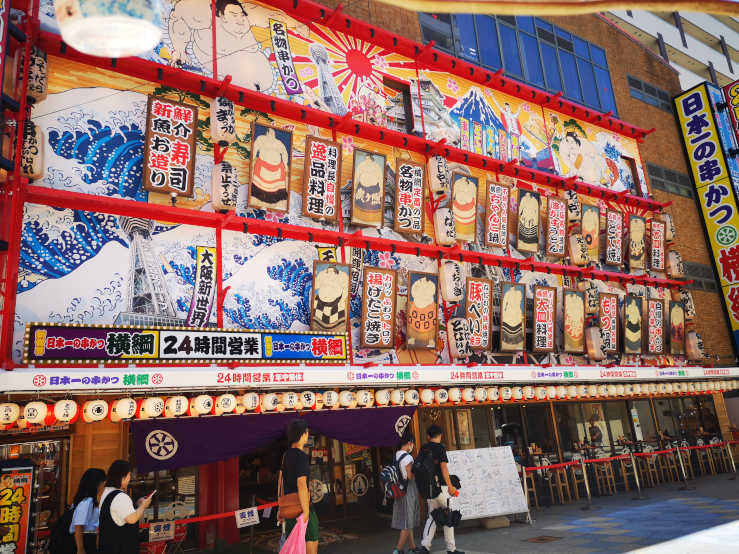
Photo: Travel In Culture
With a blend of Western and traditional Japanese culture, Shinsekai offers a glimpse of modern and pre-war Japan. It is a fabulous retro area of visual effects in the form of decoration with signs, statues, figures, and more lining the streets and shop windows. That includes a giant pufferfish and a large Billiken statue in front of a restaurant. The latter is a kind of ‘god of the way things ought to be’ and is helpful in many everyday situations to pray for good luck – whether in financial or love matters! Billiken statues can be found all over Osaka, especially in the Shinsekai area, and have been in the city since the beginning of the 1900s, introduced by an American!
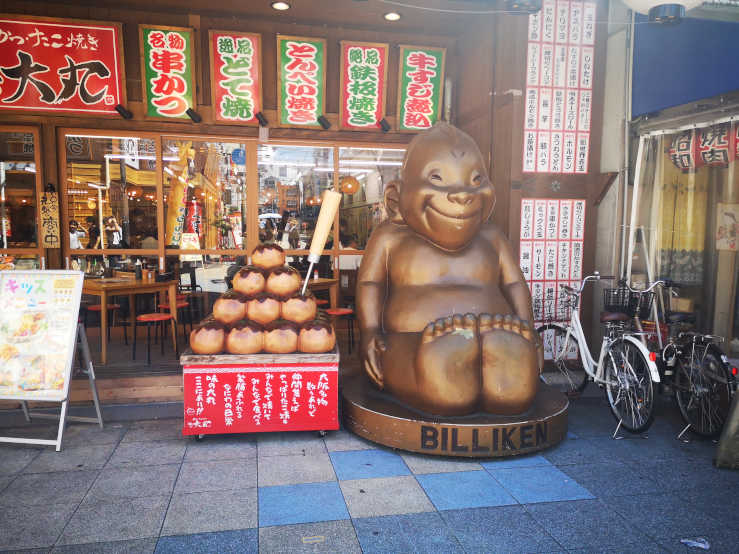
Billiken statue in Tennoji | Photo: Travel In Culture
Tsutenkaku Tower is one of the top sights in the area, a 103-metre tall tower that is also a landmark of Osaka. In addition to an observation deck, the construction contains a popular entertainment arcade.
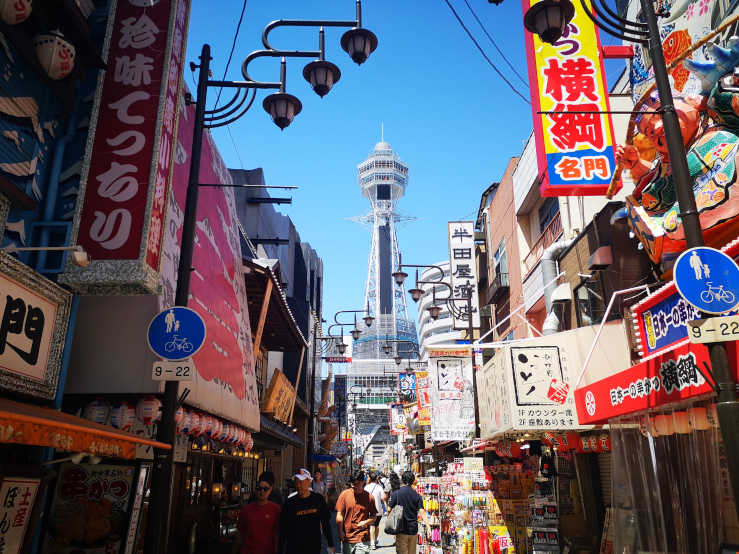
Tsutenkaku Tower | Photo: Travel In Culture
In recent years, Tennoji has become famous for Japan’s tallest building, Abeno Harukas, completed in 2014. At 300 metres, overlooking Tennoji Park, the skyscraper offers a magnificent 360-degree view of the city. Inside, you will find a large department store, a hotel, and the Abeno Harukas Art Museum.
If you wish to be in a part of Osaka convenient for Universal Studios Japan, Osaka Aquarium and other family-related entertainment, the Osaka Bay Area is maybe where you will want to stay.
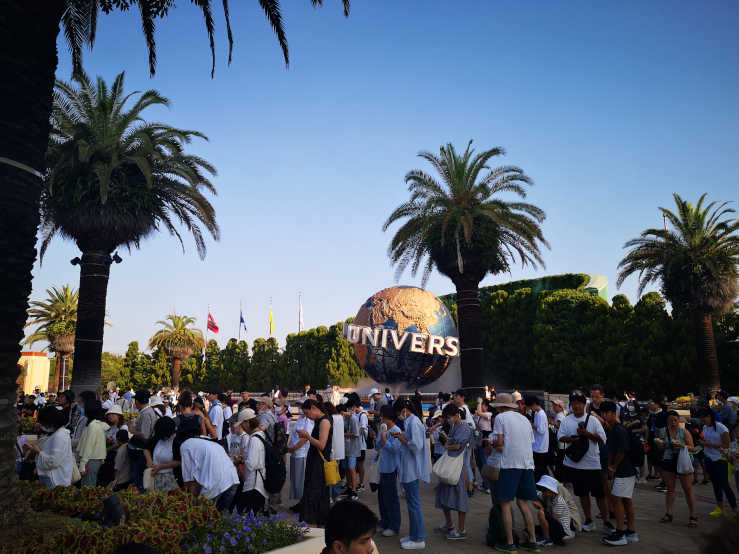
Photo: Travel In Culture
Osaka Bay is where the ferries depart to other parts of Japan, including Okinawa. Therefore, it can also be convenient to stay in the Osaka Bay Area if you plan a Japan itinerary where you will continue by ferry to one of the other Japanese islands or coastal cities.
The Osaka Bay Area consists of several artificial islands and peninsulas, hosting several theme parks, museums, and shopping centres.
By public transport, it takes about 30 minutes to reach the area from Osaka Station. As the first Universal Studios theme park in Asia, Universal Studios Japan opened on Sakurajima Island in 2001. In addition to the ‘American’ Universal Studios sections, such as The Wizarding World of Harry Potter, Jurassic Park, Hollywood, and Minion Park with rides relating to the Universal Studios’ films Spiderman, Jurassic Park, Jaws, Terminator 2, Shrek and more, this amusement park also has a Japanese component, the Super Nintendo World and a Mario Kart ride.

Photo: Travel In Culture
Outside the theme park, visitors can enjoy the Universal Citywalk Osaka, an entertainment and shopping mall with many restaurants, stores and more, including the Osaka Takoyaki Museum.
Osaka Aquarium in the Tempozan Harbor Village complex is another attraction with its gigantic tank of 5,400 tons of water for the whale shark and several other tanks filled with exciting marine life. A ferry connection links Osaka Aquarium to Universal Studios. Other attractions include the Tempozan Ferris Wheel and the Naniwa Kuishinbo Yokocho food theme park.
Explore the various areas of Tokyo and decide where to stay in Tokyo based on your interests.
Read next: A Day Trip to Lake Kawaguchiko and Visit the Bamboo Grove in Kyoto
Where to Stay in Osaka? (for the Japanese Festivals)
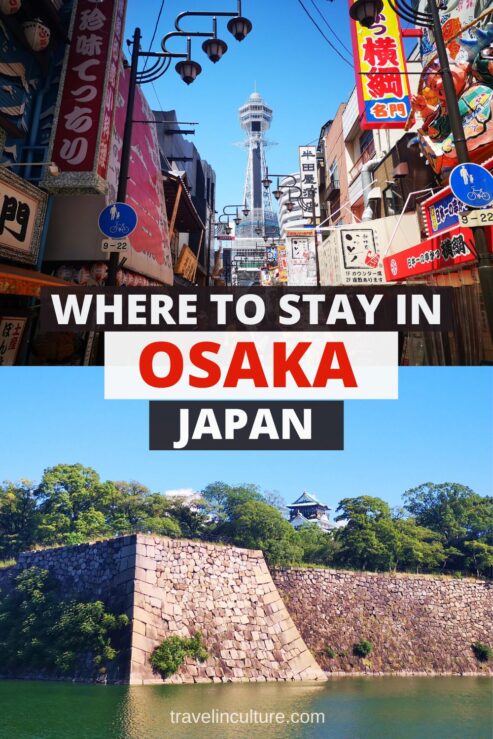
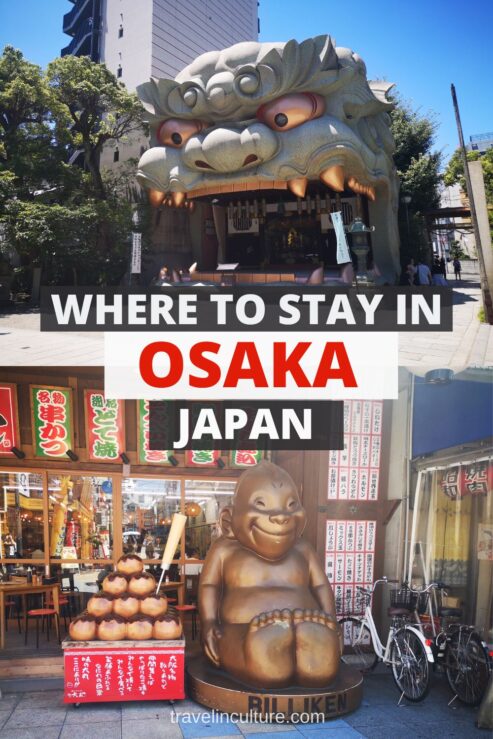
Featured image of
Where to Stay in Osaka? (for the Japanese Festivals):
Travel In Culture
Japanese Festivals | Festivals in Japan


